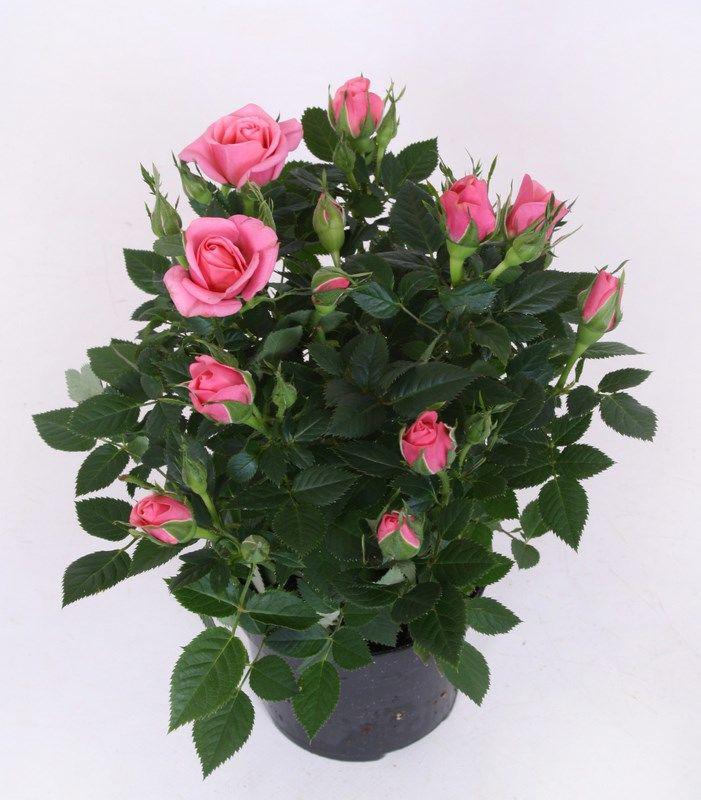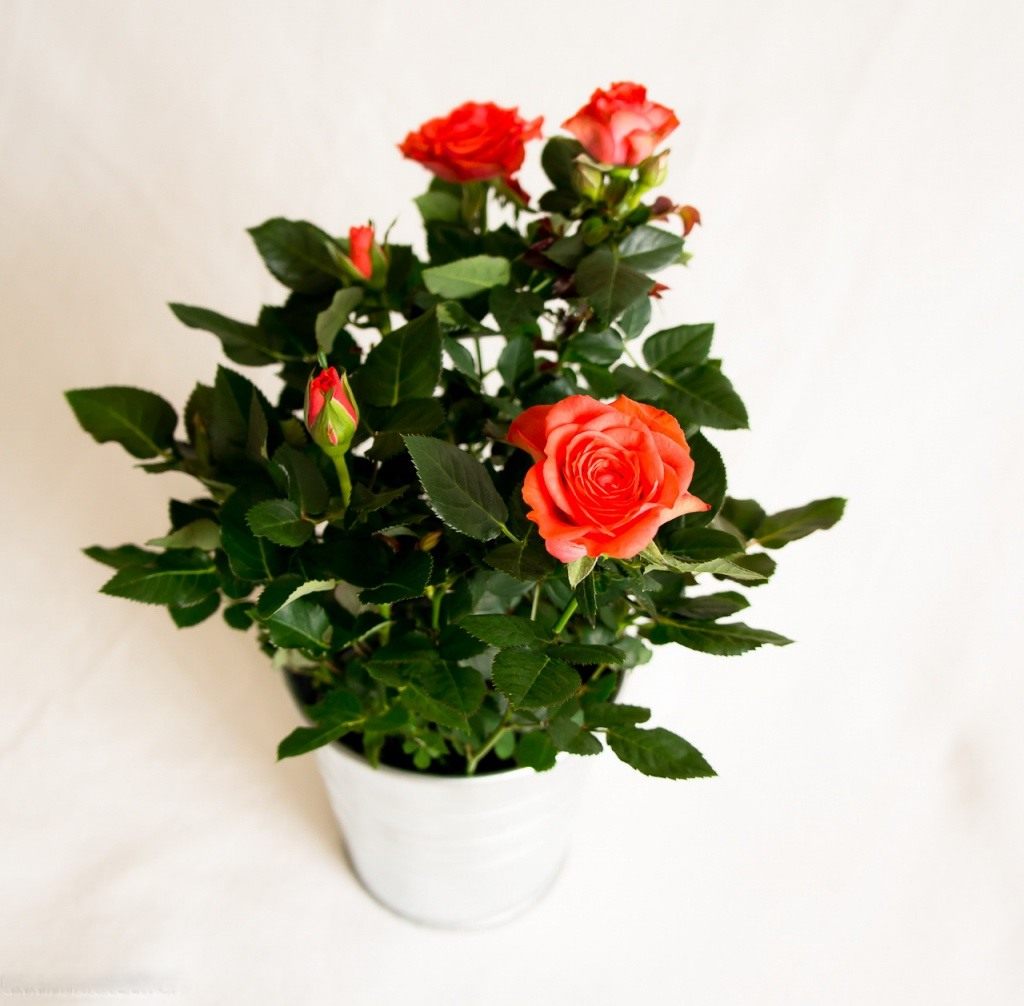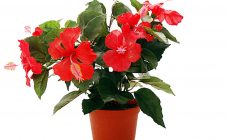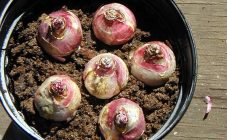Content:
It is quite possible to admire the beauty of roses every day, and not only on holidays and birthdays. And you can do this without leaving your home. A rose that grows in a pot at home will help fill the day with bright colors. The topic of today's article is the Cordana rose; home care requires scrupulousness and care, but all efforts will be justified by the end result.
About the variety: how to choose the right one
The Kordana rose is a small plant. The height of the bush is 25-30 cm. The size of the flowers is up to 5 cm. The colors of this small beauty are different:
- red;
- white;
- pink;
- yellow.
The flowering period lasts from May to October.
The purchase of this rose is possible at any flower shop. A flower in a pot is on sale, packed in additional protective material. As many bushes are planted in the pot at once (at least 3-4). Typically, plants are 2-3 months old from rooting.
It is important to know the main points to look out for before buying a flower.
- Shoots should be of a uniform color without blackening, as black spots indicate the presence of a fungal disease.
- The leaves should be bright green, firm and shiny in appearance. There should be no white bloom, brown spots, which indicates the presence of a disease. Yellow color and shedding of foliage is also a sign of a sick flower.
- It is imperative to check the plant for pests. The most common is the spider mite, which leaves behind a cobweb.
Features of the Cordana rose: home care after purchase
After the Cordana rose is bought and brought home, caring for it at home begins with a period of adaptation. It is possible that the flower will shed flowers and leaves. The first month is the most difficult and stressful. It should be waited out, and then the rose blooms again. During the adaptation period, it is recommended:
- Place the rose separately from all plants. If the flower has any diseases or pests, it can infect other indoor plants.
- After the rose is brought home, it is better to rinse it under running warm water. This is worth doing, even if the plant has been carefully examined during purchase and no pests have been found on it. Such a procedure will be an excellent prevention against spider mites.
- During the adaptation period, the rose should be constantly watered. The flower should not be heavily flooded, but drying should also not be allowed.
- Every day the rose should be sprayed with plain water. In the early days, treatment with epin (growth stimulant) can be carried out.
- Treat with a prophylactic drug Aktara. This systemic remedy fights almost all pests that can infect a plant, but its effect does not apply to the Putin tick.
After the acclimatization period has passed, the potted rose can be placed in a permanent place. Basic plant care consists of the following steps.
- The main place for the rose should be as sunny as possible, but direct rays should not hit the flower. You need to choose a place where the maximum amount of light falls throughout the year.
- Watering is one of the most important aspects of flower care.Water it regularly. The soil should not be too waterlogged, but at the same time not overdried. You can check the condition of the soil as follows: press your finger on the soil. If, after this pressure, liquid is released, then the rose does not need watering. If, on the contrary, the finger remains dry, then soil moistening is necessary. Watering is done with water at room temperature on top of the soil. It is definitely recommended to drain the water from the sump if it appears after watering.
- Top dressing. It should be carried out once a week during the active period of budding. The rest of the time, it should be fed once every 2 weeks. As a top dressing for a rose, special fertilizers for flowering plants on an organic basis are suitable.
- Transfer. It should be carried out when the rose has grown from the size of the pot, the soil is depleted or its physical properties have changed.
- Pruning. It is carried out before the winter period, when the plant is resting. At this time, flowering stops. Weak shoots are pruned.
Wintering
In winter, the rose rests and regenerates. It is important to take proper care of the wintering of the plant. Before that (in the second half of October), watering and fertilizing the rose should be gradually reduced. In winter, the rose is not fertilized at all, and watering is done 1-2 times a week.
In winter, the rose is placed in the coolest place with a temperature of 5-12 ° C. It can be a warmed balcony, a basement, where the rose should be until February.
Transfer
A potted rose gains strength very quickly, and the roots fill the entire clod of earth. The flower needs to be transplanted several times a year. How to do it correctly:
- At the bottom of the pot, drainage must be laid out with a layer of 1 cm.
- Soil is poured onto the drainage layer. It can be purchased at the store where you should choose a special one for the rose. You can also prepare the soil yourself by taking humus (2 parts), soddy soil (2 parts), sand (1 part). The soil is steamed in a water bath or spilled from the kettle.
- When transplanting under the roots, the land lump is not destroyed. Excess soil is removed from above.
- After the rose is lowered into a new pot, be sure to compact the earth and shake the pot. You can seal with your fingers. The soil is poured into the pot, not reaching the edge of 1-2 cm. Free space is needed for subsequent watering.
- After transplanting, the rose needs mandatory watering. Watering must be abundant so that water appears in the pan, which should then be drained.
- Treat the rose with a growth stimulant (epin or zircon).
- The rose is placed in its permanent place.
Pests and diseases
Rose Cordana can be infected by a spider mite. In this case, the plant is treated with a special preparation for the tick according to the instructions.
You can find a spider mite by carefully examining the leaf. On its reverse side there will be a characteristic white coating. Also, the foliage of a rose, when affected by a tick, is deformed, turns yellow and eventually falls off.
The tick is able to develop very quickly, releasing a new generation every 3-4 days. In the fight against pests, folk remedies are good: a tincture of garlic, a solution based on laundry soap.
Also, a rose can be affected by powdery mildew disease. Leaves during the defeat of this disease have an ash coating. Antifungal drugs should be used to fight the disease and take care of the plant more carefully (do not overfill, do not overfeed).
Tips from experienced gardeners
In summer and spring, it is better to take the rose to the balcony. In this case, you should definitely make sure that direct sunlight does not fall on it, and the pot itself does not overheat. To do this, it is placed in a white planter or wrapped in foil. This will protect the roots from overheating.
When pruning, you should remove not only branches, but also flowers if they have wilted. The wilted bud is cut to the first bud. Don't wait for the bud to wither completely. The first signs of wilting should be a signal for removal, otherwise the plant spends energy on the formation of seeds, and this should not be allowed.
Fertilizers are applied to the surface of the rose and to the root.
If a rose is purchased when it does not bloom or is blooming, it is better to transplant it immediately.
The rose is propagated by cuttings, which can be cut from May to August. The optimum shoot thickness is 2.5 - 3.5 mm. The cuttings are placed in a transparent glass of water (3 cm). Within a month, they will take root. They are transplanted into a pot when the roots reach a length of 1.5-2 cm. For the first days, it is better to keep the pot with freshly transplanted cuttings away from direct sunlight.
If you follow all the rules and carefully take care of the Cordana rose, it will delight the eye for many years. This indoor perennial plant can live from 5 to 15 years.
















